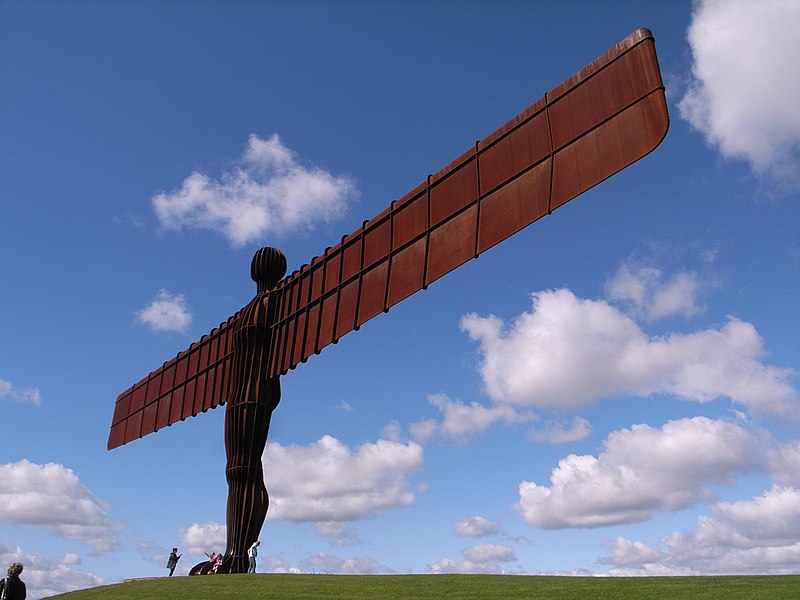The Angel of the North, a monumental sculpture standing tall on the outskirts of Gateshead, near Newcastle upon Tyne in England, is an iconic symbol of contemporary art and a powerful testament to the region’s identity. Designed by renowned British sculptor Antony Gormley, this colossal artwork was unveiled in 1998 and has since become a beloved and instantly recognizable landmark.
The Angel of the North stands at an impressive 66 feet (20 meters) tall, with a wingspan of 177 feet (54 meters). Its imposing presence and distinctive, rust-colored steel structure make it a striking silhouette against the backdrop of the surrounding landscape. The sculpture’s wings are slightly angled forward, as if embracing the region and its people.
The choice of location for the Angel of the North is significant. It is positioned on a hill overlooking the A1 motorway, one of the major gateways into the North East of England. This strategic placement ensures that the sculpture is visible to thousands of commuters and travelers daily, making it a symbol not just for the local community but also for those passing through the region.
Gormley’s inspiration for the Angel of the North draws from the idea of a guardian spirit or messenger, and the sculpture has indeed become a guardian of the region’s heritage and a symbol of optimism and pride. Its raw, industrial aesthetic pays homage to the area’s coal-mining and industrial history, resonating with the resilience and spirit of the people who call this region home.
The Angel of the North has achieved iconic status, capturing the imagination of the public and art enthusiasts alike. Its colossal size and the emotional impact it evokes have made it a source of inspiration and a focal point for community events and gatherings. Locals often refer to it simply as “The Angel,” a testament to the affection and sense of ownership that the sculpture has garnered over the years.
Beyond its physical presence, the Angel of the North serves as a catalyst for conversations about public art, cultural identity, and the evolving landscape of the North East. It has become a symbol of regeneration and renewal, reflecting the region’s transition from an industrial past to a future defined by creativity and innovation.
In conclusion, the Angel of the North is more than a mere sculpture; it is a powerful and emotive symbol that transcends its steel framework. Standing proudly on the landscape, it represents the resilience, pride, and spirit of the North East of England, while also inviting contemplation on the role of public art in shaping cultural identity and fostering a sense of community.



